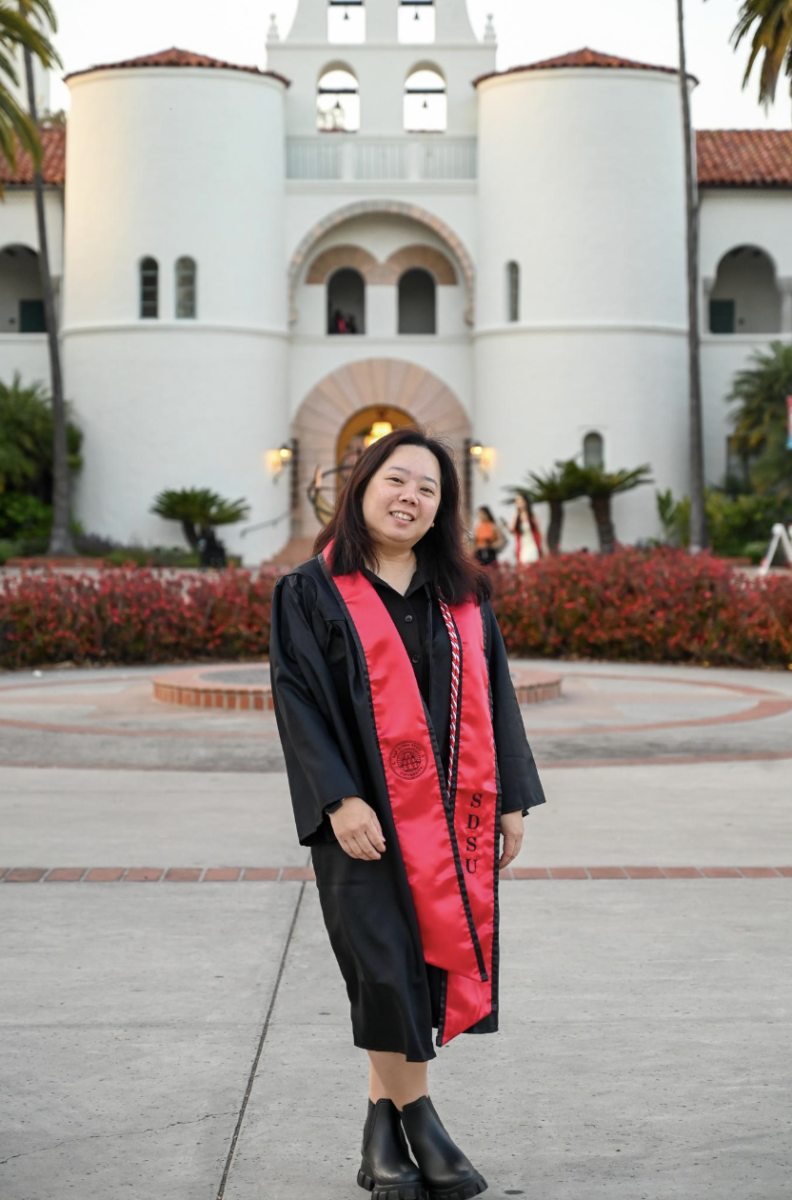San Diego State is a large campus for students who have back-to-back classes. I consider the 10 or 15-minute rush between classrooms my cardio workout for the day. Walking from class to class is tiring and long, which is usually why I’m late to almost every class every day. Skateboarding is technically illegal on campus, and riding the Red and Black Shuttle is only convenient with a broken leg that prohibits walking. Bicycling seems the way to go, but a little innovation for biking at SDSU is in order.
Owning a bike on a college campus is a hassle. In order to be a legal cyclist on campus, a bike owner needs a bicycle license corresponding to the bike’s serial number, according to the SDSU Police Department’s bicycle policy. The bike owner must then lock the bike, preferably with a U-lock. But these are bulky, hard to ride with and annoying at any other time than when locking the bike.
“The absolute minimum security device is a 3-foot length of three-eights-inch case hardened chain together with a quality key type padlock with at least a three-eights-inch hardened shackle,” the SDSUPD’s policy reads
However, there is still the possibility of the bike being stolen.
“Bicycle lockers provide the highest security bike storage, Class I long-term parking with protection from theft, vandalism and inclement weather to encourage cycling as a means of transportation,” according to CycleSafe, a bicycle locker manufacturer.
SDSU even had some of these locks on campus at one point, but they have been replaced with bike racks and barns. The racks provide minimal security, because any thief with a good pair of chain cutters could pedal away with a bike in less than a minute. The barns, while a safer option, still do not provide enough protection, because anyone with a key can come waltzing right in.
Last fall, Associated Students addressed the problems with biking around SDSU by starting the Aztec Recreation Center’s “Aztec Bike” Rental Program. This allows SDSU students and faculty to rent bikes for a monthly fee, but they are still responsible for the security of the bike.
In Paris, casual bike transportation has taken another route. Velib is a public bike-sharing program in which members can access more than 20,000 bikes placed in one of the 1,800 stations scattered across Paris, ride it to its destinations, and safely secure it in one of the designated racks where any other member can access it. However, this caused more people to use the program. Parisians are seeing more and more Velib bikes being worn out from vandalism, as well as wear and tear. One problem is that the bikes are only attached to bike racks.
Let’s combine the ideas of bike sharing with bike lockers. Take Velib’s sharing system and the ARC’s program rental idea, combine them with the safer locking system of bike lockers, multiply the number of locations around campus and voila; a comprehensive, theft-preventive, green transportation option is born. The program itself will be responsible for the maintenance of the bikes. A semester-long membership fee will include insurance for damage to or loss of the bike. The locks on the lockers, where the bikes are stored, can be programmed to log who checks out a bike and when and can automatically record the bike serial numbers from a transmitter under the seat when the bike is checked into a locker.
The infrastructure for this idea doesn’t currently exist, but it can with a little investment from interested students. With a little innovation, SDSU’s ARC “Aztec Bike” Rental Program can become the way to ride at SDSU.






